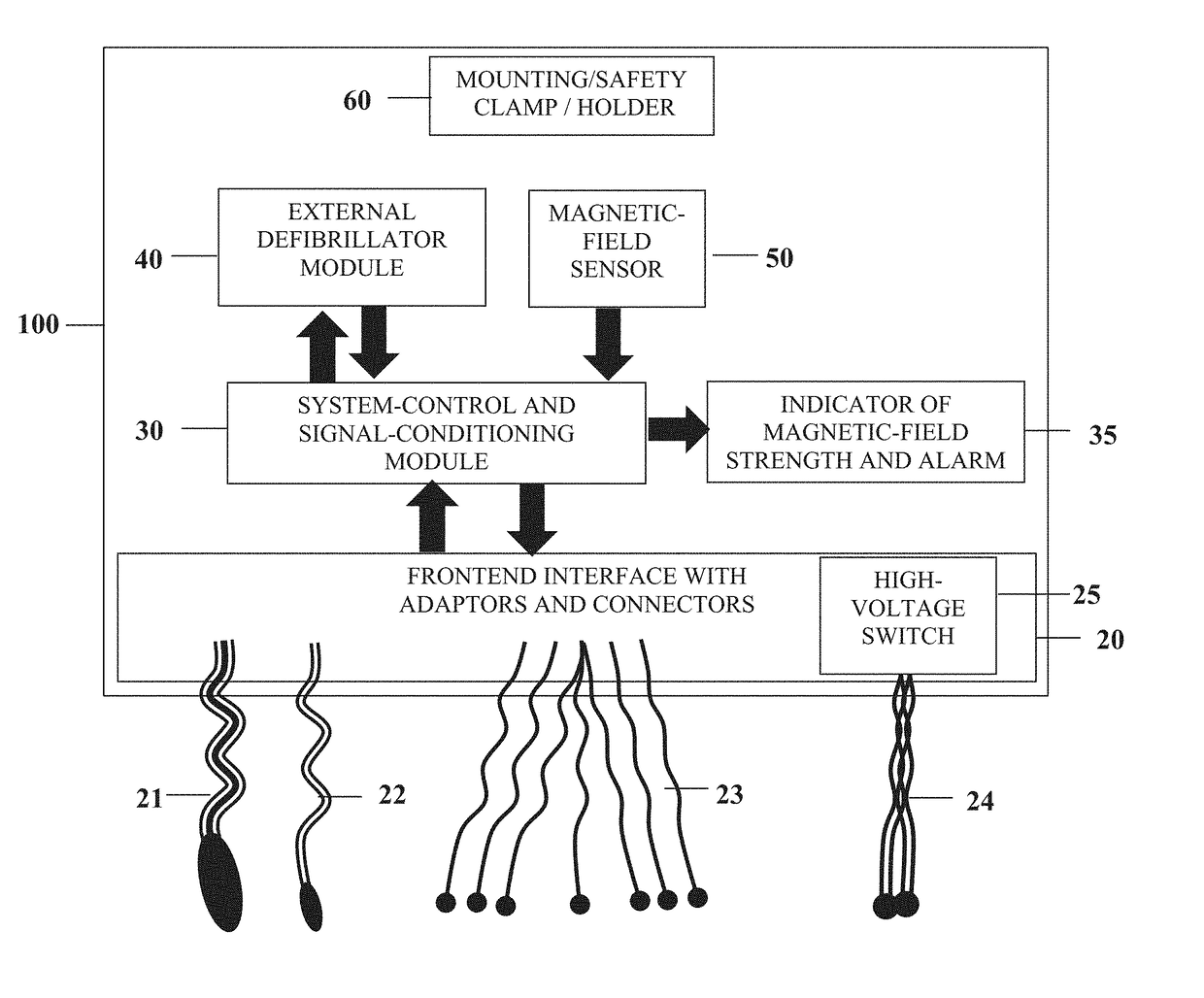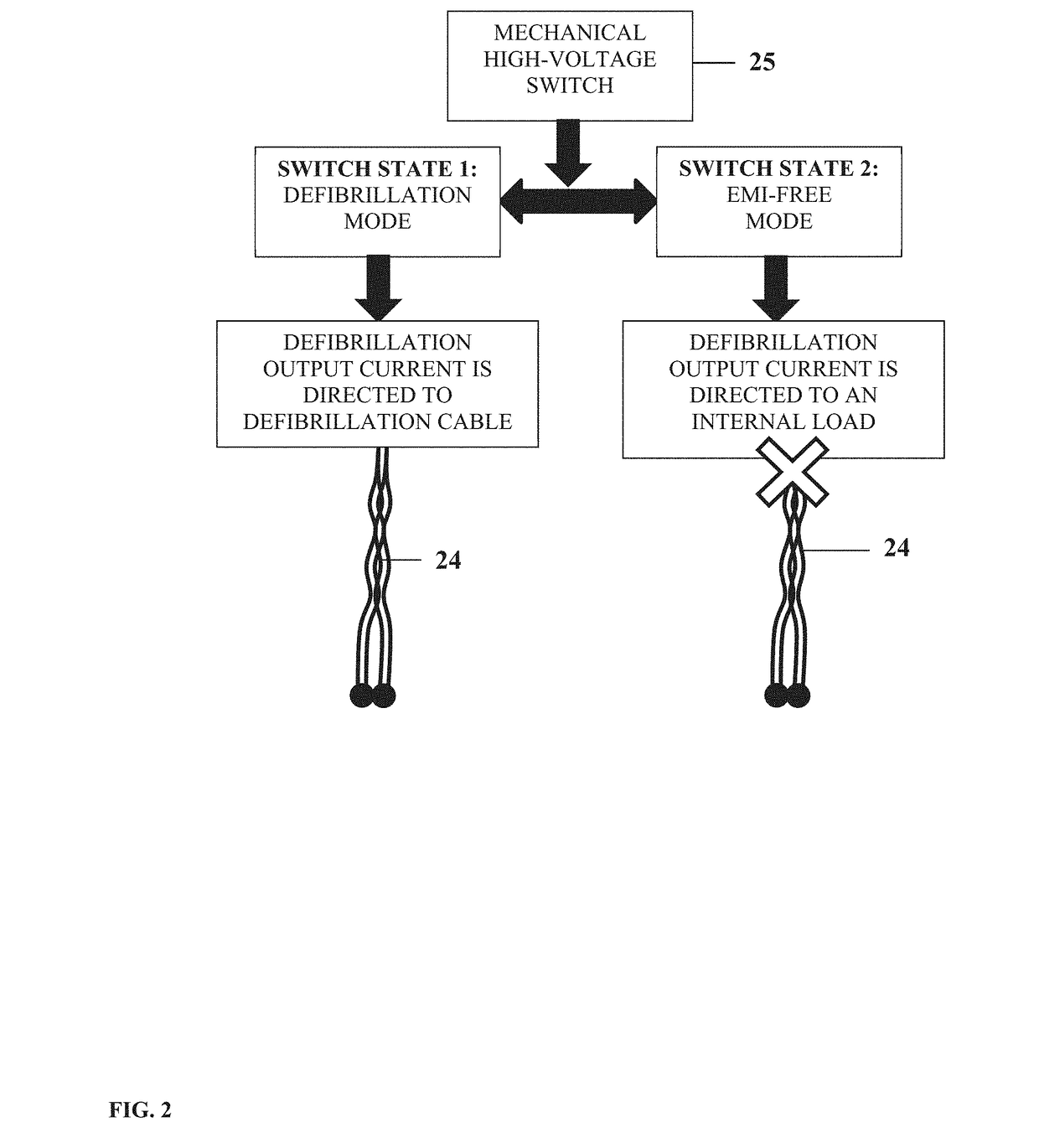Accessory for external cardiac defibrillation, pacing and monitoring physiological signals/health data in the presence of electromagnetic interference
a technology of electromagnetic interference and accessory, which is applied in the field of biomedical methods and systems for external defibrillation, pacing, and cardioversion, can solve the problems of ic-mri development impeded by defibrillation and pacing, and achieve the effect of reliable wireless data transmission
- Summary
- Abstract
- Description
- Claims
- Application Information
AI Technical Summary
Benefits of technology
Problems solved by technology
Method used
Image
Examples
example 1
Example 1
An MRI-Guided EP Study
[0104]This hypothetical example describes the application of a medical device of this invention for safe and efficient external cardiac defibrillation during an MRI-guided EP study.
[0105]The MAGNA-DEX device of this invention would be brought into the scanner room and initially positioned 25 cm from the edge of an MRI magnet bore, which would trigger an audio-visual alarm indicating a strong EMF that exceeds the preset threshold of 200 Gauss. The MAGNA-DEX device would then be moved away from the magnet and affixed to the end of a patient table located approximately 1.5 m from the MRI magnet bore.
[0106]Because many defibrillator functions require continuous, high-quality ECG, blood pressure, or pulse-oximetry signals, which may become obscured by the high-level EMI generated by MRI scanners (especially during real-time cardiovascular imaging, which requires the application of steady-state-free-precession pulse sequences with very short duty cycle, time...
PUM
 Login to View More
Login to View More Abstract
Description
Claims
Application Information
 Login to View More
Login to View More - R&D
- Intellectual Property
- Life Sciences
- Materials
- Tech Scout
- Unparalleled Data Quality
- Higher Quality Content
- 60% Fewer Hallucinations
Browse by: Latest US Patents, China's latest patents, Technical Efficacy Thesaurus, Application Domain, Technology Topic, Popular Technical Reports.
© 2025 PatSnap. All rights reserved.Legal|Privacy policy|Modern Slavery Act Transparency Statement|Sitemap|About US| Contact US: help@patsnap.com



